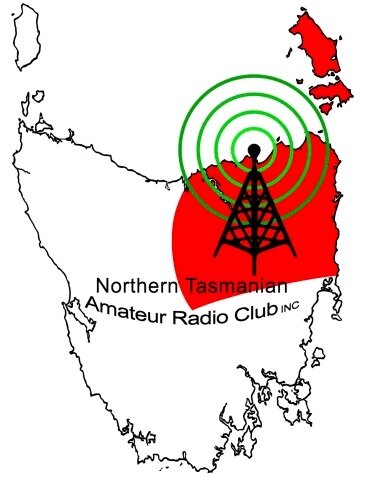Broadcast - 23 Feb 2025
Last week’s club technical night saw Colin VK7ZCF with the next instalment of his HF antenna project incorporating a 5.2 metre telescopic antenna. This version of the antenna has extended its usefulness by now making it 40 Metre band friendly. It incorporates a 3D printed loading coil former which has subsequently been wound with 1.6mm stainless steel tie wire. Sliding externally over the loading coil is a 3D printed adjustable tap ring. Once tuned the tap ring is held in place by tightened its 3D printed winged bolt.
I believe that to make the setup even more field versatile Colin has decided to try for the 80 Metre band as well. He is currently waiting on the arrival of aluminium tubular stock so he can fabricate some screw together extension sections that can be installed under the loading coil to extend its length and usefulness onto the 80 metre band.
For some pretty good pictures of the antenna setups actually in use and close-ups of the 3D printed loading coil and the adjustable tap ring, check out the state-wide SSTV archives for last Thursday night. Just for information the green heat-shrink sleeves seen around the antenna base are actually the screw ends on the ground plane radials or counterpoise wires. Well done Colin, this project is certainly generating much interest.
Eric VK7ZPE brought in one of his acquisitions, definitely intended for QRP use. It was a “Z-Match Tuner” purchased from the internet. Designed for HF use it is allegedly capable of 10 Watt PEP and allows for manual matching to antennas in the range of 25 to 2500 Ohms impedance. This is a very nicely presented unit in a black aluminium extruded case. Being palm sized and light weight it may also be very popular for portable field use in SOTA and POTA activations.
Ross VK7ALH brought in a Kenwood TS-520S. A classic HF transceiver using hybrid construction incorporating vacuum tubes for driver and finals and is capable of 100 Watts output on either of its two operating modes SSB or CW. The rig covers amateur allocations from 160 through to 10 metre in 8 selectable bands. The rig can be used in VFO mode or one of four selectable memory channels when fitted with a crystal for a desired frequency. Manufactured in Japan, circa late 1970s, it is evidently still in mint condition internally and certainly still in very good condition externally. Considering its age even the leather handle was in excellent condition.
I reckon, unlike normal amateurs counting the number of rigs they have with their fingers, Ross must measure his in linear metres of shelf space. HiHi
As always pictures will be available on the NTARC Web site under “Blogs” for this broadcast. NTARC Blogs
UPCOMING EVENTS
TestNet and TechNet session - Every Wednesday, TestNet/CW course on 3.580MHz from 7 pm, then a TechNet on 3.567MHz from 7.30 pm till 8.30 pm. Your host for the evening is Nic VK7WW.
Club Room Technical night session - The next session will be on Wednesday the 5th March, at the usual time of 6.30 pm at the Club Room Archer Street, Rocherlea.
Coffee Morning - held every Friday in the NTARC Club rooms. Time is from 10 am to noon and we look forward to seeing you all there. So why not pop in check the QSL cards and join us for a cuppa, there is endless tea and coffee along with biscuits available for a donation.
Finally - A reminder to all members that if you have any items of news you would like added to our weekly roundup, no matter how trivial, then please email them to the Secretary at the following address news@ntarc.net all items to be received no later than 5 pm on the Friday prior to the Broadcast.
That’s all folks,
73, Stefan VK7ZSB, Secretary NTARC Inc.












